Most Confusing Euphemisms Americans Use Daily

Written by
Ernest Bio Bogore

Reviewed by
Ibrahim Litinine
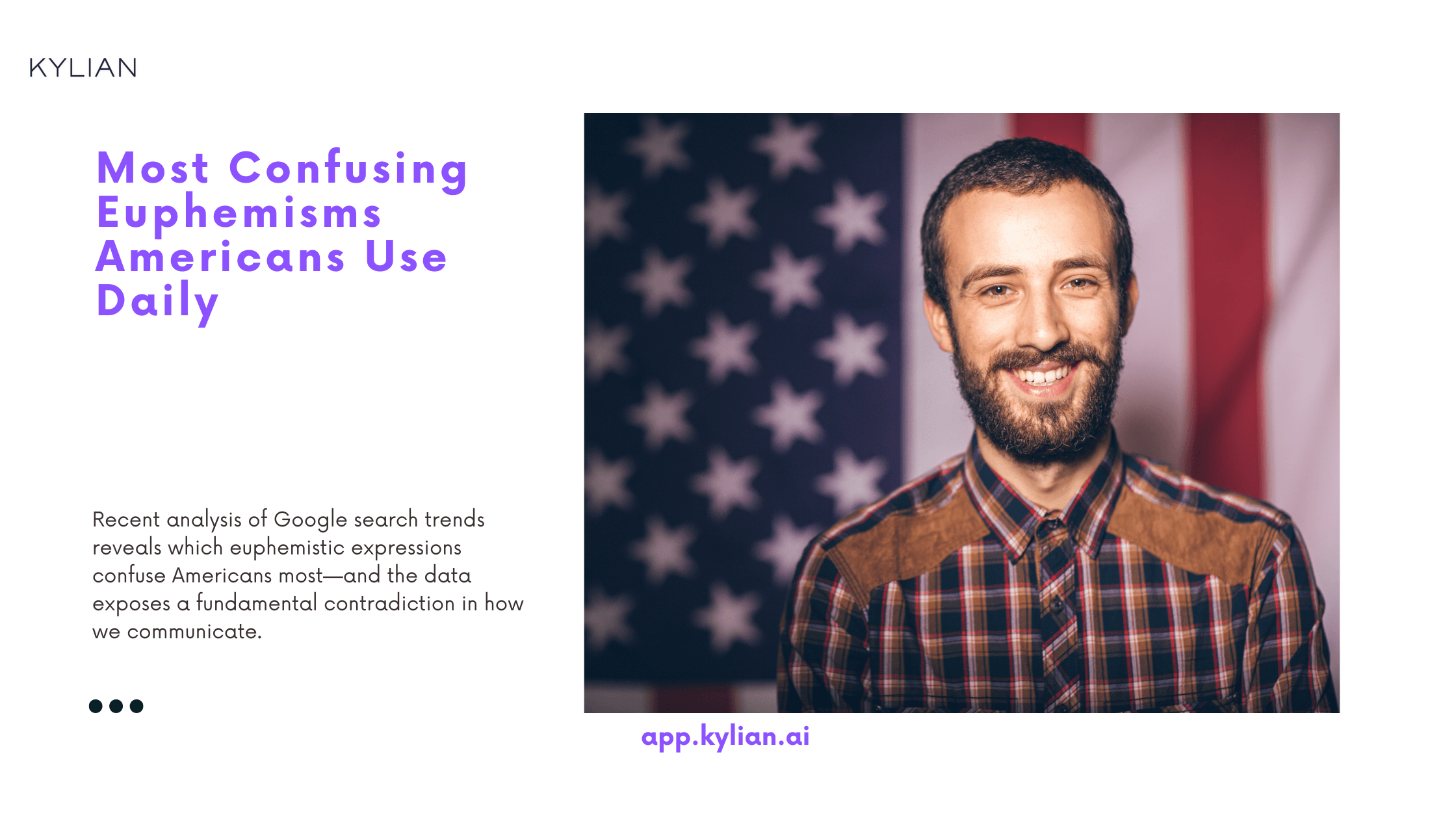
Communication failures cost American businesses $62.4 million annually, according to the Society for Human Resource Management. Yet we continue layering our language with euphemisms that obscure rather than clarify meaning. Recent analysis of Google search trends reveals which euphemistic expressions confuse Americans most—and the data exposes a fundamental contradiction in how we communicate.
The Euphemism Paradox: Why We Obscure What We Mean
Americans demonstrate a peculiar relationship with indirect language. Survey data from nearly 1,000 respondents reveals that 94% of Americans regularly employ euphemisms, with 57% using them in most daily conversations. More telling: 73% prefer euphemistic language over direct communication in social situations.
This preference creates a communication paradox. We choose words specifically designed to soften meaning, then search Google frantically when we encounter unfamiliar euphemisms. The contradiction illuminates a deeper linguistic challenge: our desire for politeness conflicts with our need for clarity.
The workplace bears the heaviest burden of this linguistic confusion. Fifty percent of respondents report using euphemisms most frequently in professional settings, where precision matters most. When "rightsizing" means layoffs and "negative growth" means losses, organizational communication becomes a decoding exercise rather than information transfer.
Data-Driven Analysis: Which Euphemisms Confuse Most
Google search volume analysis spanning January 2020 through January 2022 identifies specific euphemistic expressions that consistently perplex American users. The methodology tracked searches combining euphemisms with clarifying phrases like "meaning of" and "definition of"—revealing genuine confusion rather than casual curiosity.
Top 10 Most Confusing Euphemisms:
- Frumpy (dowdy or unfashionable) - Leading confusion indicator
- Monday morning quarterback (someone who criticizes after events conclude)
- Economical (cheap or cost-conscious)
- Put to sleep (euthanize an animal)
- Up to scratch (meeting acceptable standards)
- Indisposed (using the restroom)
- For the birds (worthless or unimportant)
- Getting on (aging)
- Golden years (elderly period of life)
- Backed up (constipated)
The data reveals patterns that challenge conventional assumptions about euphemistic clarity. Terms we consider straightforward—like "economical"—generate substantial search confusion. Meanwhile, obviously euphemistic phrases like "passed away" rarely prompt definition searches, suggesting context provides adequate clarification.
Regional Linguistic Variations: Geographic Confusion Patterns
State-by-state analysis uncovers significant regional differences in euphemistic comprehension. This geographic variation matters for businesses operating across multiple states and content creators targeting national audiences.
Regional Confusion Leaders:
Western States: "Kick the bucket" dominates confusion searches, appearing as the top unclear euphemism in 12 western states. This death-related expression's opacity stems from its historical origins—the term likely derives from either the wooden beam used in slaughterhouses or the bucket kicked away during suicides.
Midwest: "Monday morning quarterback" puzzles Midwestern users most frequently. The sports metaphor's specificity to American football culture may explain why this region, with strong football traditions, still searches for clarification—the phrase's figurative application extends far beyond sports contexts.
South and Northeast: "Put to sleep" leads confusion in both regions, despite widespread pet ownership. The euphemism's dual meaning—both peaceful sleep and euthanasia—creates interpretive challenges that context alone cannot resolve.
These regional patterns suggest that cultural familiarity doesn't guarantee euphemistic understanding. Even expressions rooted in local traditions generate confusion when applied metaphorically.
Category-Specific Confusion Analysis
Breaking down euphemistic confusion by subject matter reveals which topics suffer most from indirect language:
Death-Related Euphemisms
Death euphemisms show surprising clarity levels. "Passed away" and "lost someone" rarely generate definition searches, suggesting these expressions successfully balance sensitivity with comprehension. However, more creative death euphemisms like "pushing up daisies" or "bought the farm" consistently confuse users.
The effectiveness of common death euphemisms validates their continued use. When dealing with grief and loss, gentle language serves genuine communicative purposes without sacrificing understanding.
Appearance-Related Terms
Physical appearance euphemisms create the most confusion relative to their usage frequency. "Frumpy" tops overall confusion rankings, while "well-fed" (overweight) and "aging" (getting older) also generate substantial search volume.
This confusion pattern reveals societal discomfort with direct appearance commentary. We create increasingly obscure terms to avoid offense, then find ourselves unable to decode these same expressions.
Personality and Intelligence Euphemisms
"Monday morning quarterback" leads personality-related confusion, followed by "economical" and "high-strung." These expressions attempt to soften criticism through metaphor, but their opacity often defeats their diplomatic purpose.
The data suggests that personality euphemisms fail at their intended function. Rather than preserving relationships through gentle language, these terms create communication barriers that may damage relationships more than direct honesty would.
Bodily Function Euphemisms
Americans prefer euphemisms for bodily functions (56% of respondents) yet simultaneously find these expressions most cringe-worthy (47%). This contradiction explains why terms like "indisposed" and "backed up" generate substantial confusion searches.
The paradox reflects deep cultural ambivalence about natural bodily processes. We demand euphemistic coverage of these topics while recognizing the artificiality of such language.
The Workplace Communication Crisis
Professional environments amplify euphemistic confusion through power dynamics and cultural pressures. When managers discuss "career transitions" instead of demotions, or "optimization opportunities" instead of budget cuts, employee understanding suffers.
Recent corporate layoff announcements illustrate this dysfunction. Companies describing "workforce adjustments" and "organizational efficiency improvements" leave employees uncertain about their security. The euphemistic language intended to soften difficult news instead creates anxiety through ambiguity.
Data supports this concern: workplace settings lead euphemism usage at 50%, yet professional communication demands maximum clarity. This mismatch suggests organizational communication training should address euphemistic clarity rather than encouraging further linguistic obfuscation.
The Generational Divide in Euphemistic Understanding
Survey demographics reveal age-related patterns in euphemistic comprehension. Younger Americans show higher confusion rates with traditional euphemisms, while older users struggle with contemporary indirect language.
Traditional Euphemisms (Higher Young Adult Confusion):
- "Powder my nose" (use the restroom)
- "In a family way" (pregnant)
- "Passed on" (died)
Contemporary Euphemisms (Higher Older Adult Confusion):
- "Ghosting" (suddenly ending communication)
- "Throwing shade" (subtle criticism)
- "Salty" (bitter or resentful)
This generational gap creates intergenerational communication barriers. Workplace teams spanning multiple age groups face particular challenges when euphemistic references assume shared cultural knowledge.
Digital Age Impact on Euphemistic Evolution
Social media platforms accelerate euphemistic creation and evolution, often outpacing comprehension. Terms gain popularity through viral sharing before their meanings stabilize, creating temporary confusion periods where definitions remain fluid.
Platform-specific euphemisms compound this confusion. Professional networks like LinkedIn develop different euphemistic conventions than personal platforms like Instagram. Users must navigate multiple euphemistic vocabularies depending on their digital context.
The speed of digital euphemistic evolution challenges traditional language learning approaches. Dictionary updates lag behind usage, leaving users dependent on crowd-sourced definitions of uncertain accuracy.
Strategic Implications for Clear Communication
The euphemism confusion data reveals actionable insights for improving communication effectiveness:
For Business Leaders: Audit internal communications for unnecessary euphemistic language. When sensitive topics require delicate handling, choose euphemisms with clear contextual meaning rather than creative metaphors that obscure information.
For Content Creators: Consider audience demographics when selecting euphemistic language. Regional and generational differences in comprehension affect content accessibility across diverse audiences.
For Educators: Address euphemistic literacy as part of comprehensive communication training. Students benefit from understanding both euphemistic creation patterns and recognition strategies.
The Future of American Euphemistic Language
Current trends suggest increasing euphemistic complexity rather than simplification. Social sensitivity concerns drive creation of new indirect expressions faster than education efforts can maintain comprehension.
This trajectory raises important questions about communication efficiency. If euphemisms consistently confuse rather than clarify, their continued proliferation may harm rather than help interpersonal understanding.
The data suggests a need for balance: maintaining euphemistic options for genuinely sensitive situations while recognizing that excessive indirect language creates communication barriers rather than removing them.
Practical Recommendations for Clearer Communication
Assess Context Before Choosing Euphemisms: Consider whether indirect language serves the situation or simply creates confusion. Direct communication often proves more respectful than euphemistic alternatives that leave audiences guessing at meaning.
Test Euphemistic Clarity: When euphemisms seem necessary, verify audience understanding rather than assuming comprehension. Brief clarification prevents extended confusion.
Regional Awareness: Recognize geographic variations in euphemistic understanding. National communications should either avoid regionally confusing terms or provide clear context.
Generational Sensitivity: Acknowledge age-related differences in euphemistic familiarity. Mixed-age audiences benefit from either avoiding generation-specific terms or providing discrete clarification.
Learn Any Language with Kylian AI
Private language lessons are expensive. Paying between 15 and 50 euros per lesson isn’t realistic for most people—especially when dozens of sessions are needed to see real progress.
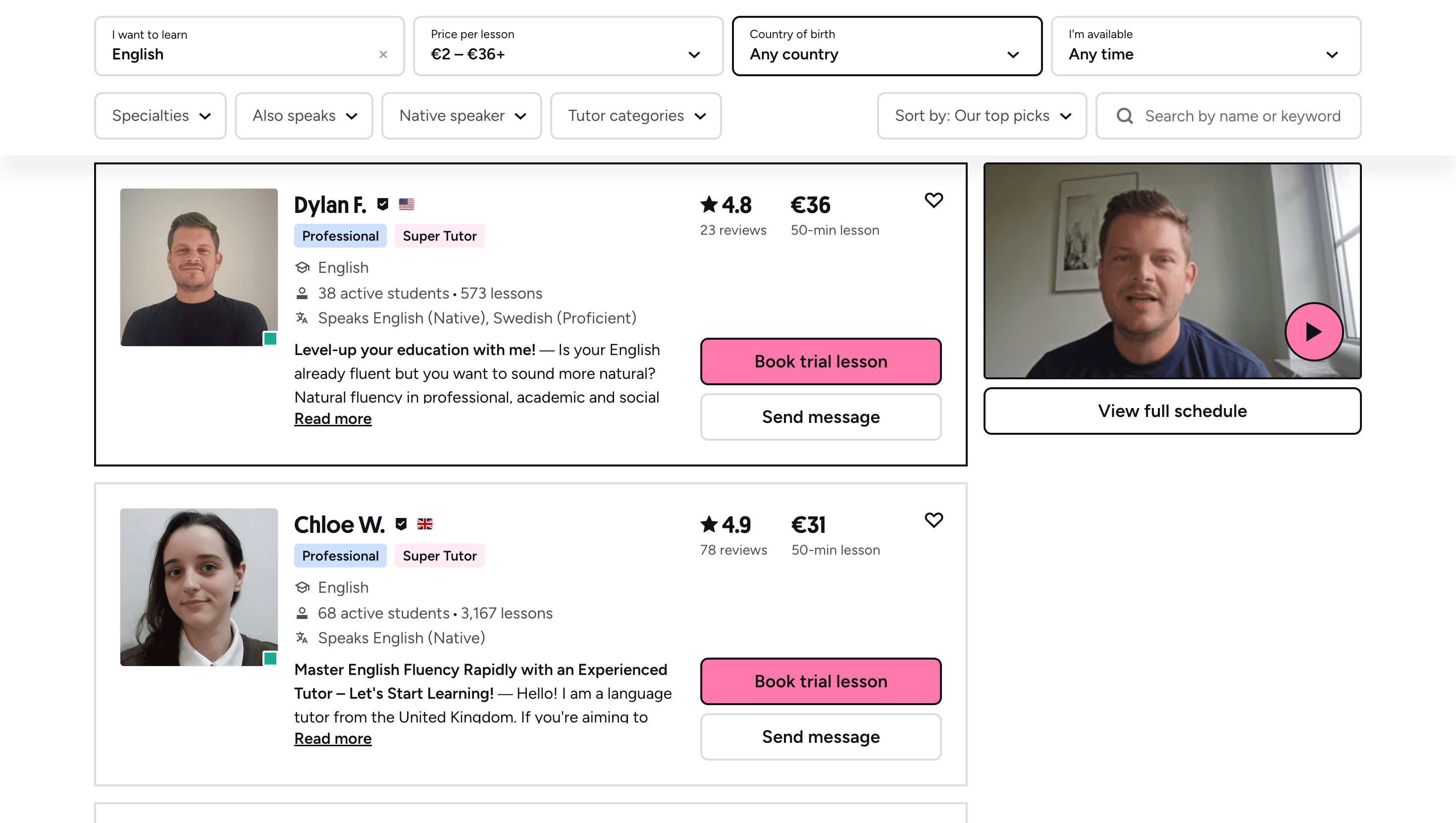
Many learners give up on language learning due to these high costs, missing out on valuable professional and personal opportunities.
That’s why we created Kylian: to make language learning accessible to everyone and help people master a foreign language without breaking the bank.
To get started, just tell Kylian which language you want to learn and what your native language is
Tired of teachers who don’t understand your specific struggles as a French speaker? Kylian’s advantage lies in its ability to teach any language using your native tongue as the foundation.
Unlike generic apps that offer the same content to everyone, Kylian explains concepts in your native language (French) and switches to the target language when necessary—perfectly adapting to your level and needs.
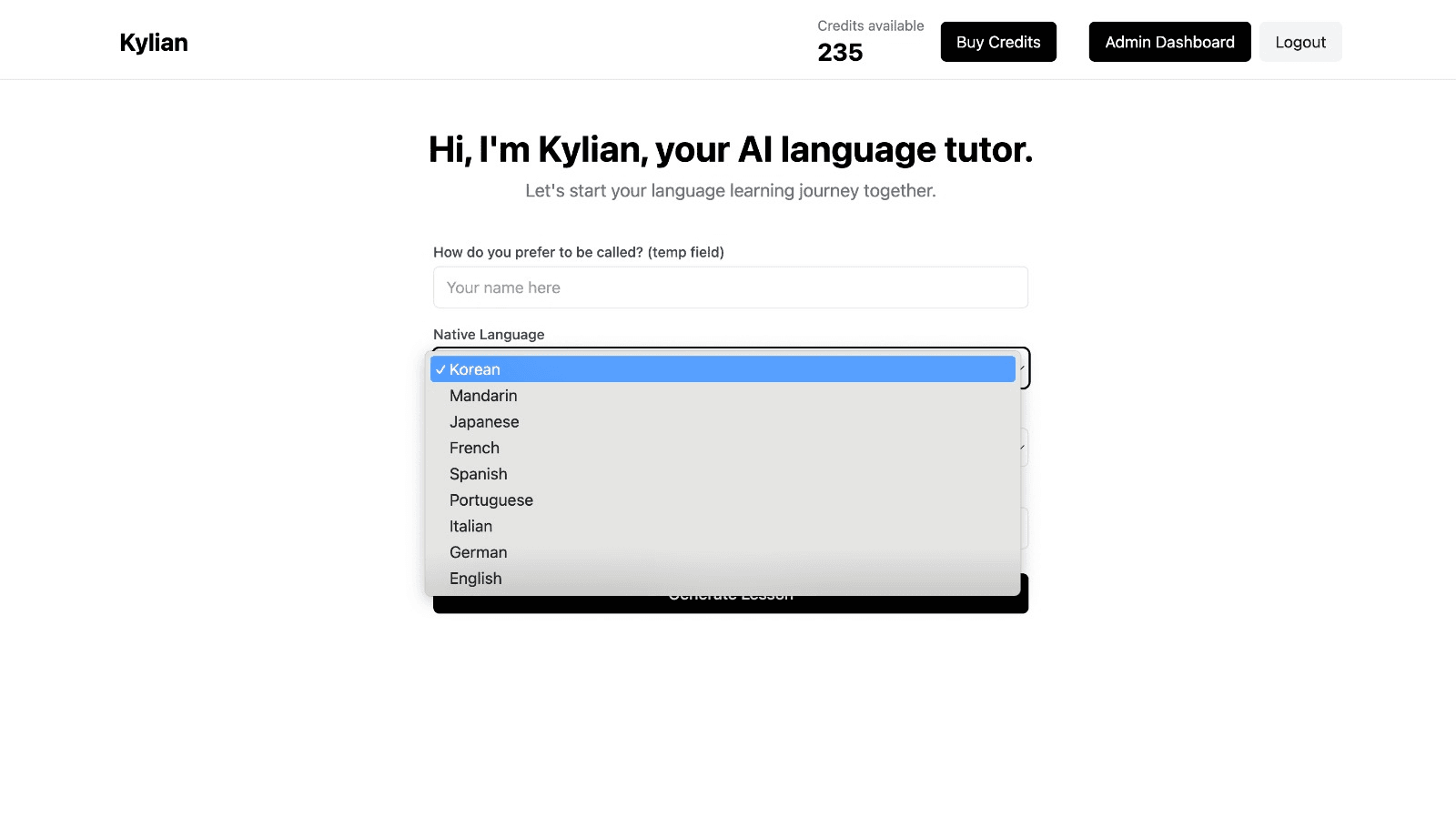
This personalization removes the frustration and confusion that are so common in traditional language learning.
Choose a specific topic you want to learn
Frustrated by language lessons that never cover exactly what you need? Kylian can teach you any aspect of a language—from pronunciation to advanced grammar—by focusing on your specific goals.
Avoid vague requests like “How can I improve my accent?” and be precise: “How do I pronounce the R like a native English speaker?” or “How do I conjugate the verb ‘to be’ in the present tense?”
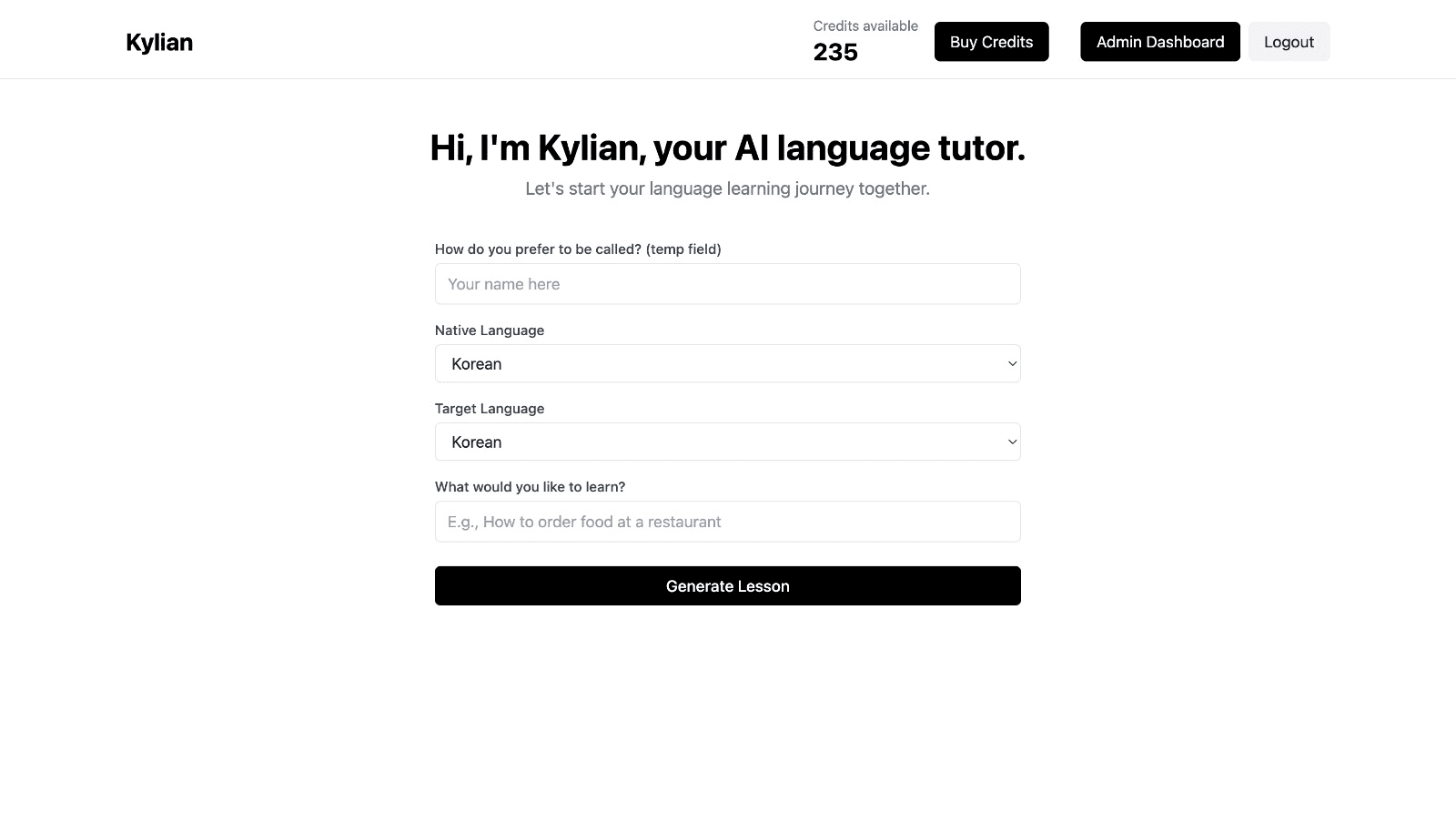
With Kylian, you’ll never again pay for irrelevant content or feel embarrassed asking “too basic” questions to a teacher. Your learning plan is entirely personalized.
Once you’ve chosen your topic, just hit the “Generate a Lesson” button, and within seconds, you’ll get a lesson designed exclusively for you.
Join the room to begin your lesson
The session feels like a one-on-one language class with a human tutor—but without the high price or time constraints.
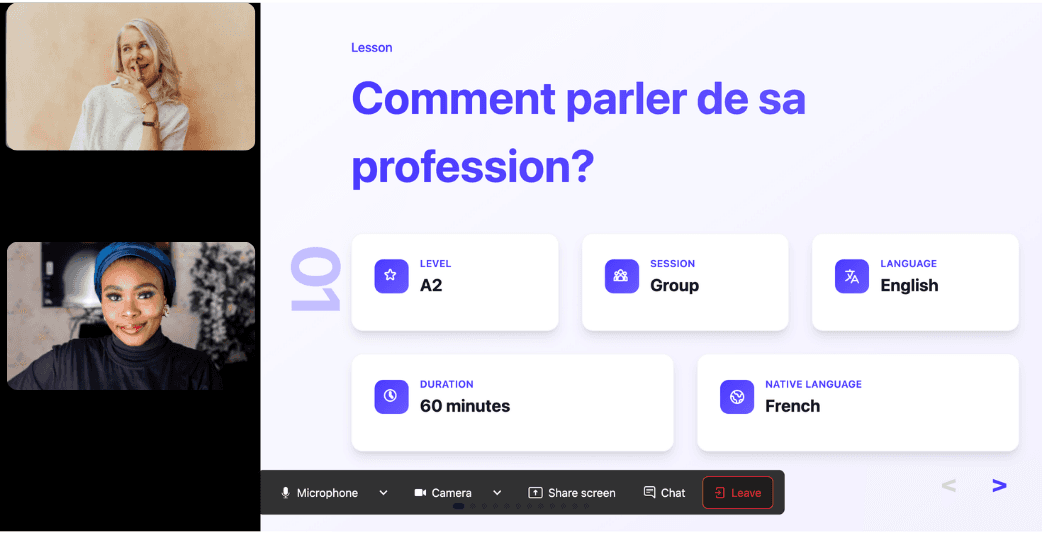
In a 25-minute lesson, Kylian teaches exactly what you need to know about your chosen topic: the nuances that textbooks never explain, key cultural differences between French and your target language, grammar rules, and much more.
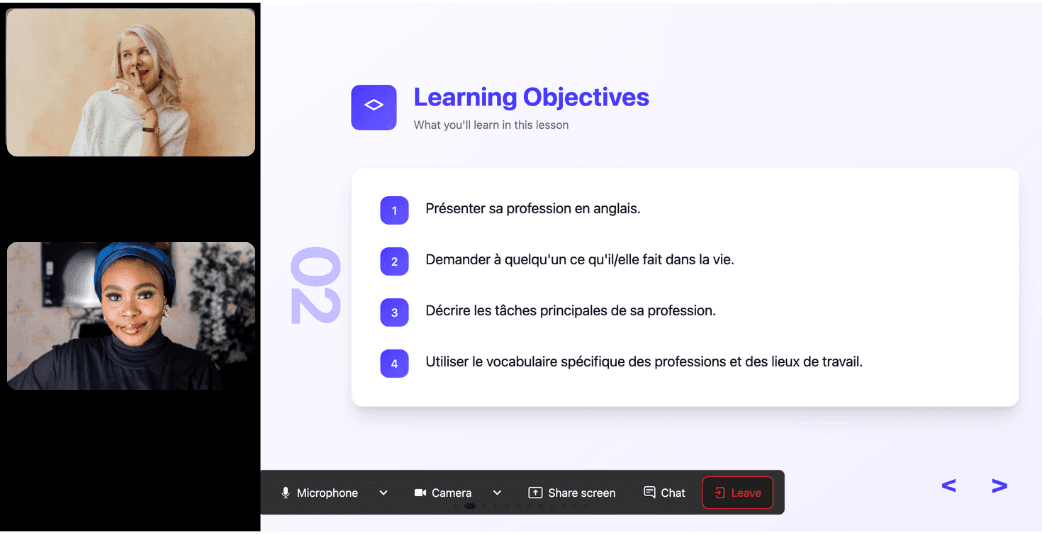
Ever felt frustrated trying to keep up with a native-speaking teacher, or embarrassed to ask for something to be repeated? With Kylian, that problem disappears. It switches intelligently between French and the target language depending on your level, helping you understand every concept at your own pace.
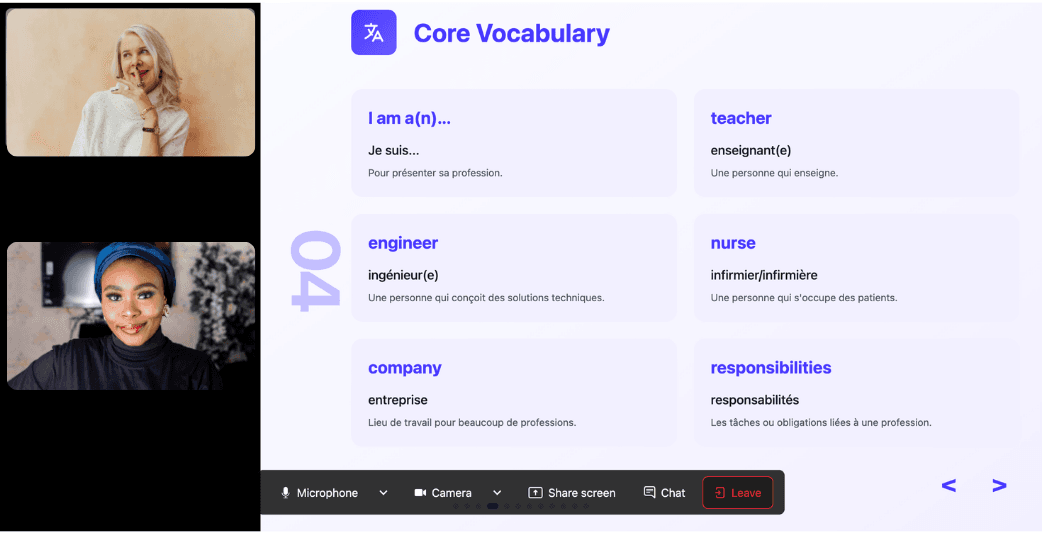
During the lesson, Kylian uses role-plays, real-life examples, and adapts to your learning style. Didn’t understand something? No problem—you can pause Kylian anytime to ask for clarification, without fear of being judged.
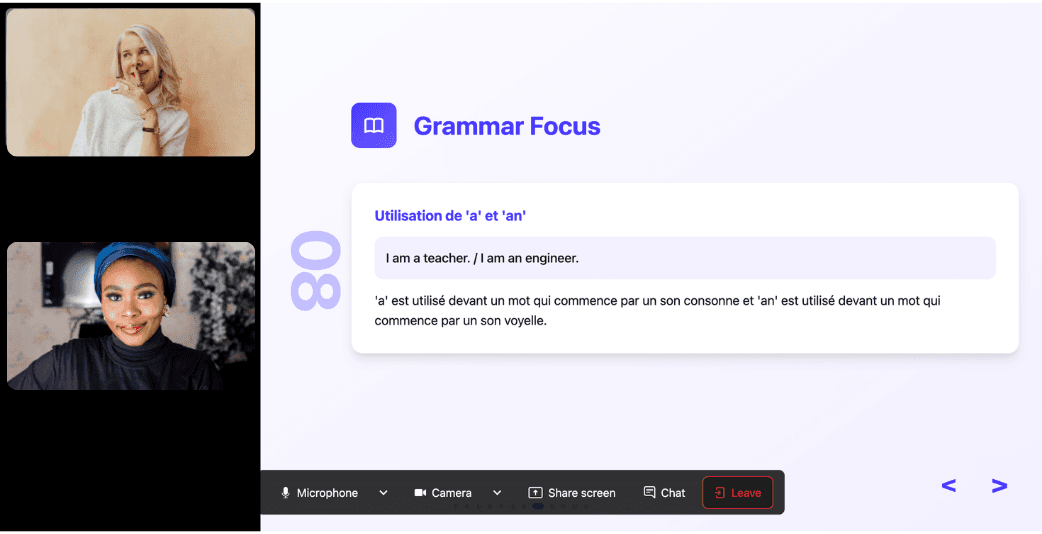
Ask all the questions you want, repeat sections if needed, and customize your learning experience in ways traditional teachers and generic apps simply can’t match.
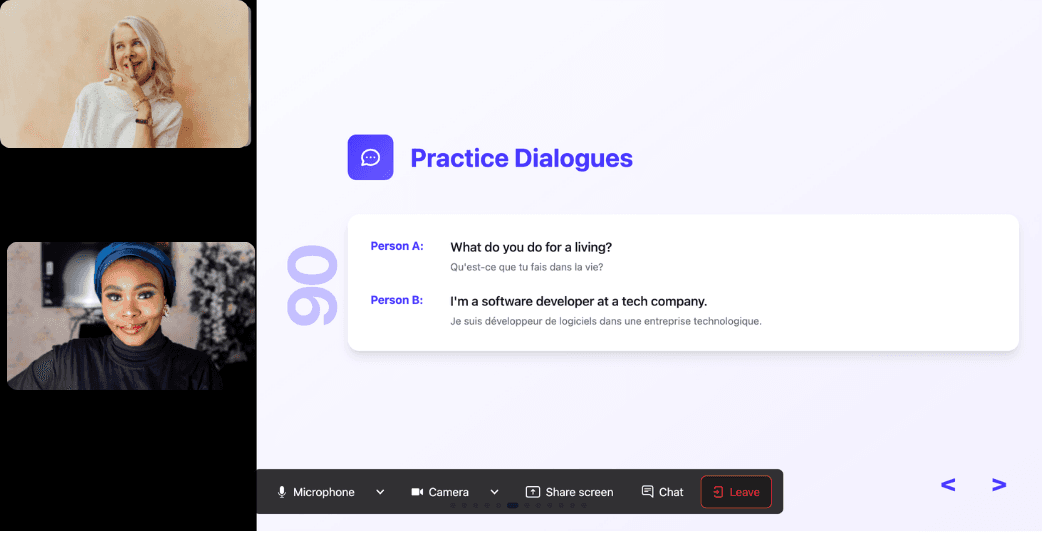
With 24/7 access at a fraction of the cost of private lessons, Kylian removes all the barriers that have kept you from mastering the language you’ve always wanted to learn.
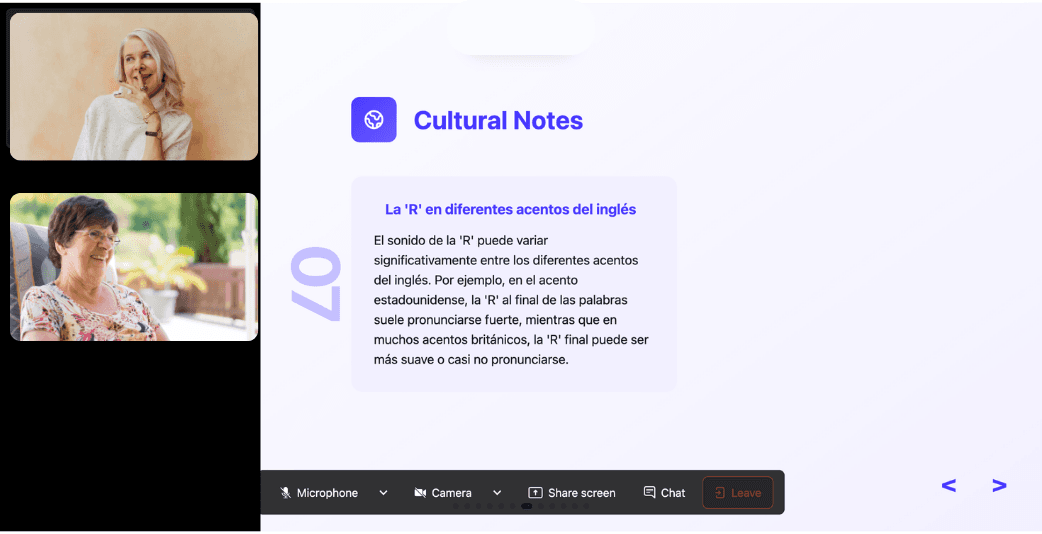
Similar Content You Might Want To Read

Difference Between "En" and "À" in French: Complete Guide
French prepositions present unique challenges for language learners. Among these, "en" and "à" are particularly problematic due to their overlapping functions and contextual nuances. Understanding their differences isn't merely an academic exercise—it's fundamental to achieving fluency and precision in French communication.

Months Names in French: A Complete Guide
Learning the names of months in French represents one of the fundamental building blocks of functional language acquisition. Time references permeate daily conversation, from scheduling appointments to discussing historical events or planning future activities. Without these temporal markers, communication remains severely limited.

French Pronouns: A Complete Guide for Learners
Are you beginning your journey into French language acquisition? If you've completed a few French lessons and want to solidify your understanding of pronouns, you've arrived at precisely the right resource. This in-depth exploration of French pronouns will examine what they are, why they're fundamental in French communication—both spoken and written—and how to apply them correctly in various contexts. We'll dissect the primary categories of French pronouns—subject pronouns, object pronouns, possessive pronouns, and several others—enabling you to participate in meaningful French conversations with confidence. By the conclusion of this guide, you'll possess a thorough grasp of French pronouns and be prepared to elevate your language proficiency to new heights.

Complete Guide to French Months: Master Calendar Vocabulary
Mastering French months transcends simple vocabulary acquisition. Each month carries cultural weight, linguistic patterns, and grammatical rules that reveal deeper insights into French society and language structure. This systematic approach to French calendar vocabulary will transform your temporal expressions from basic translations to culturally informed communication. The strategic importance of learning French months becomes evident when considering their frequency in daily conversation. Temporal references appear in approximately 23% of conversational French, making month vocabulary essential for meaningful interaction. Beyond utility, French months connect directly to cultural celebrations, seasonal patterns, and historical commemorations that define French identity.

The Essential Guide to Saying "Thank You" in French
In every culture worldwide, expressing gratitude represents a fundamental social cornerstone. Yet in France, the art of saying "thank you" transcends mere politeness—it embodies an essential cultural practice deeply woven into daily interactions. Understanding the nuances of French gratitude expressions doesn't just prevent social faux pas; it demonstrates cultural literacy and respect that French speakers deeply value. This comprehensive guide examines the various expressions of gratitude in French across formal, casual, and written contexts. We'll analyze when and how to deploy each phrase effectively, examine crucial cultural context, and highlight common mistakes to avoid.

What Does Bits and Bobs Mean in English?
The phrase "bits and bobs" encompasses far more than its seemingly simplistic construction would suggest. This quintessentially British expression has woven itself into everyday conversation, carrying unique cultural significance that transcends mere vocabulary. But what exactly does this colorful idiom mean, where did it originate, and why has it endured for centuries? Let's examine this fascinating phrase that continues to permeate English language usage today.